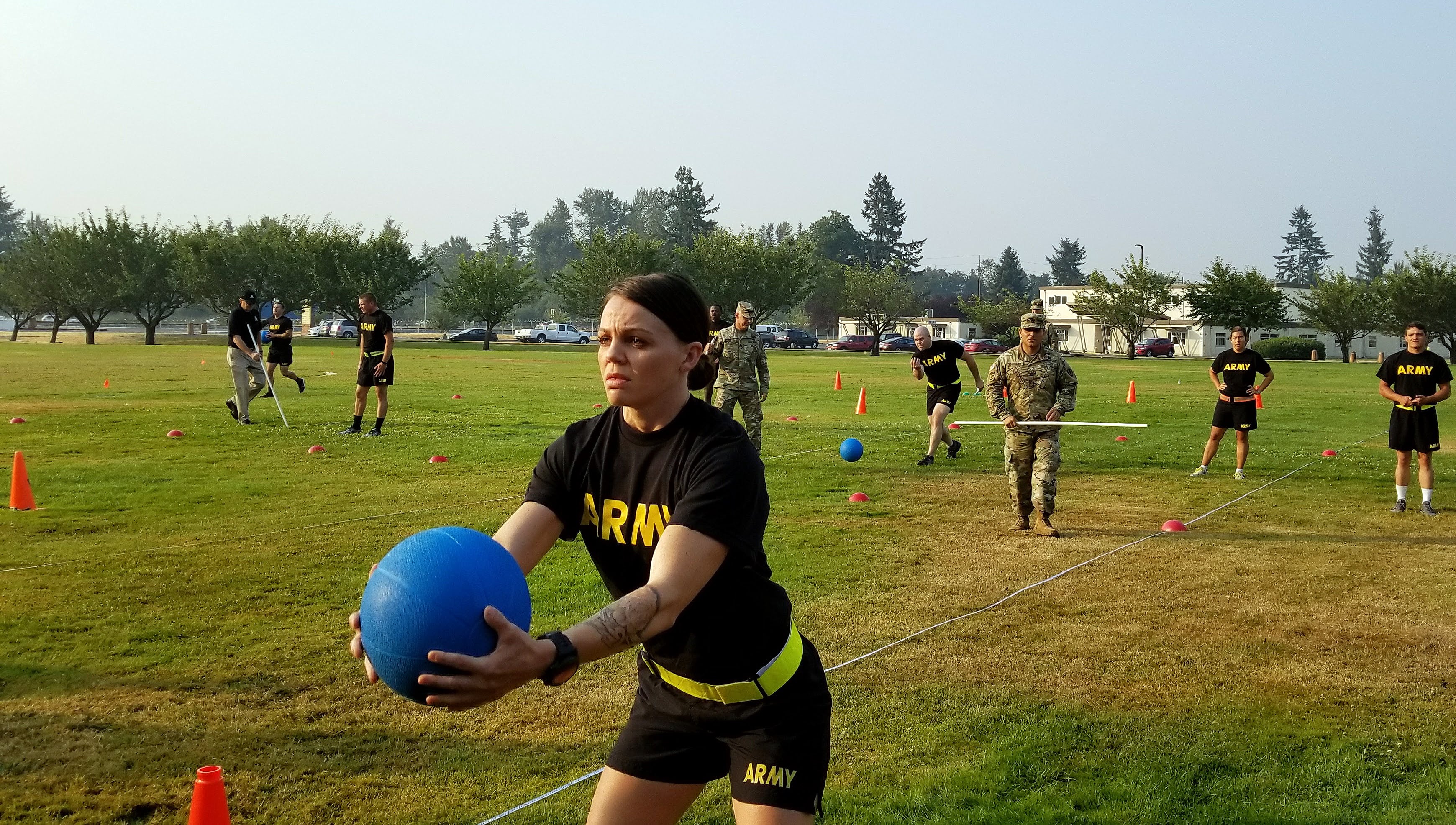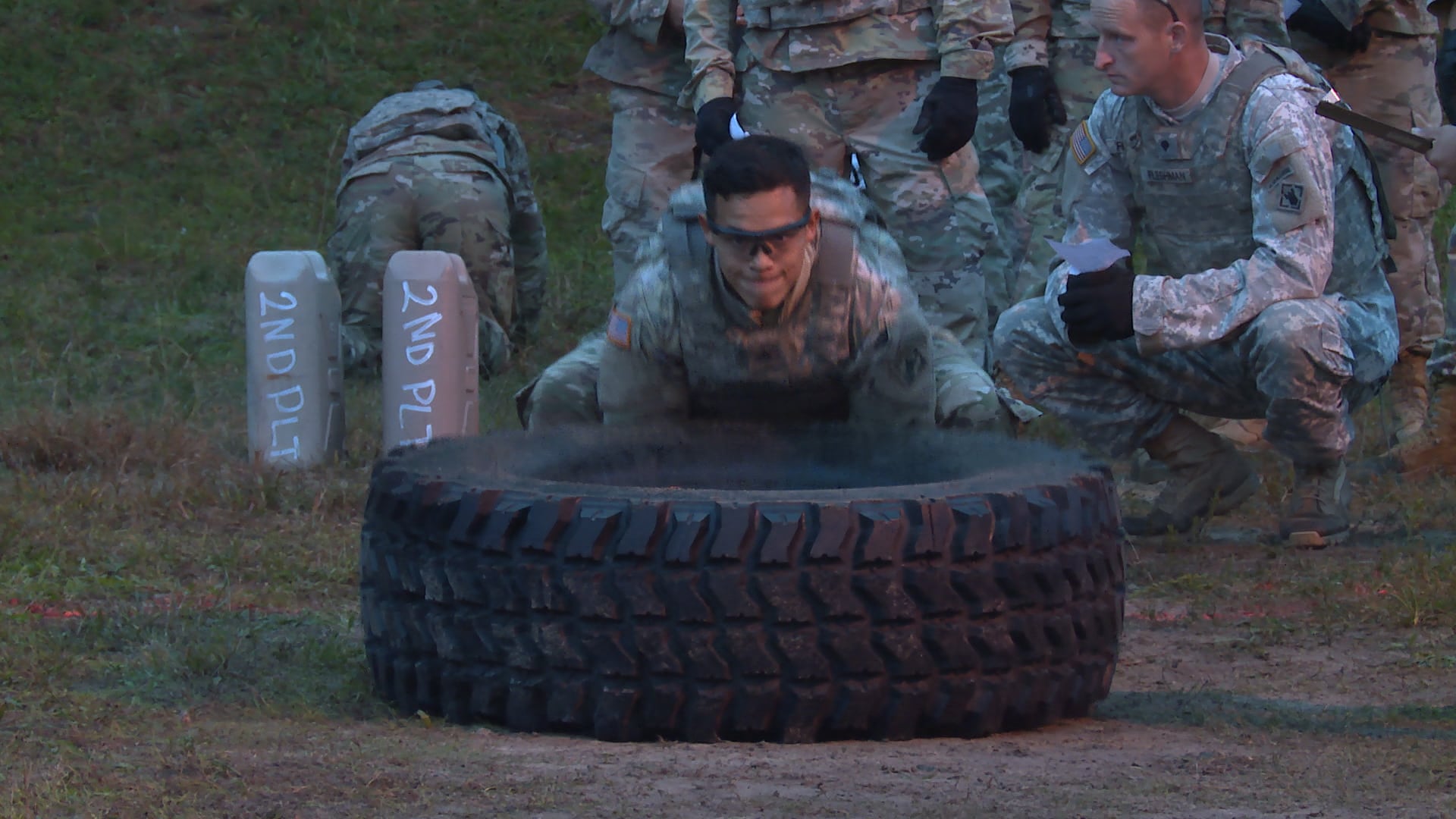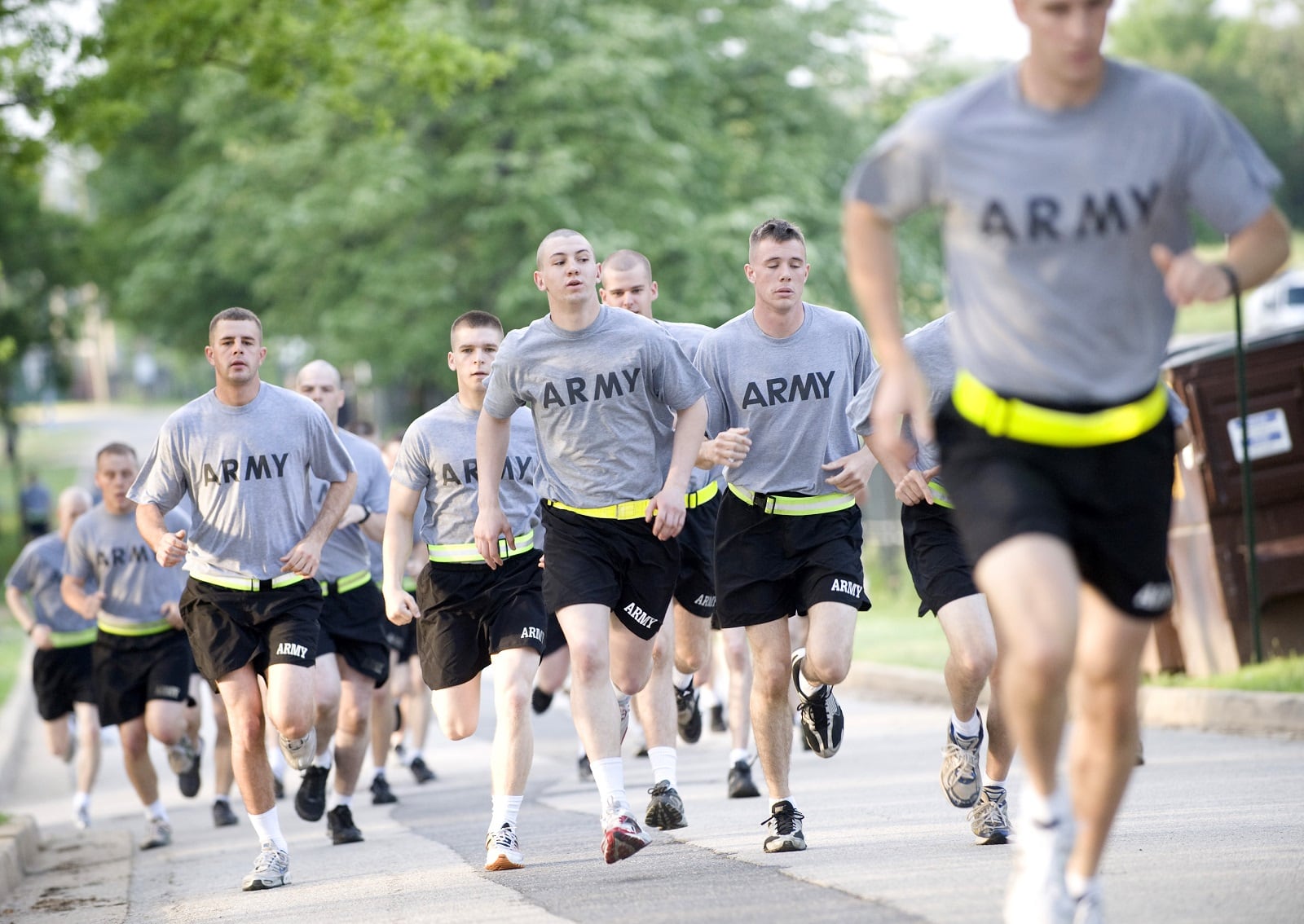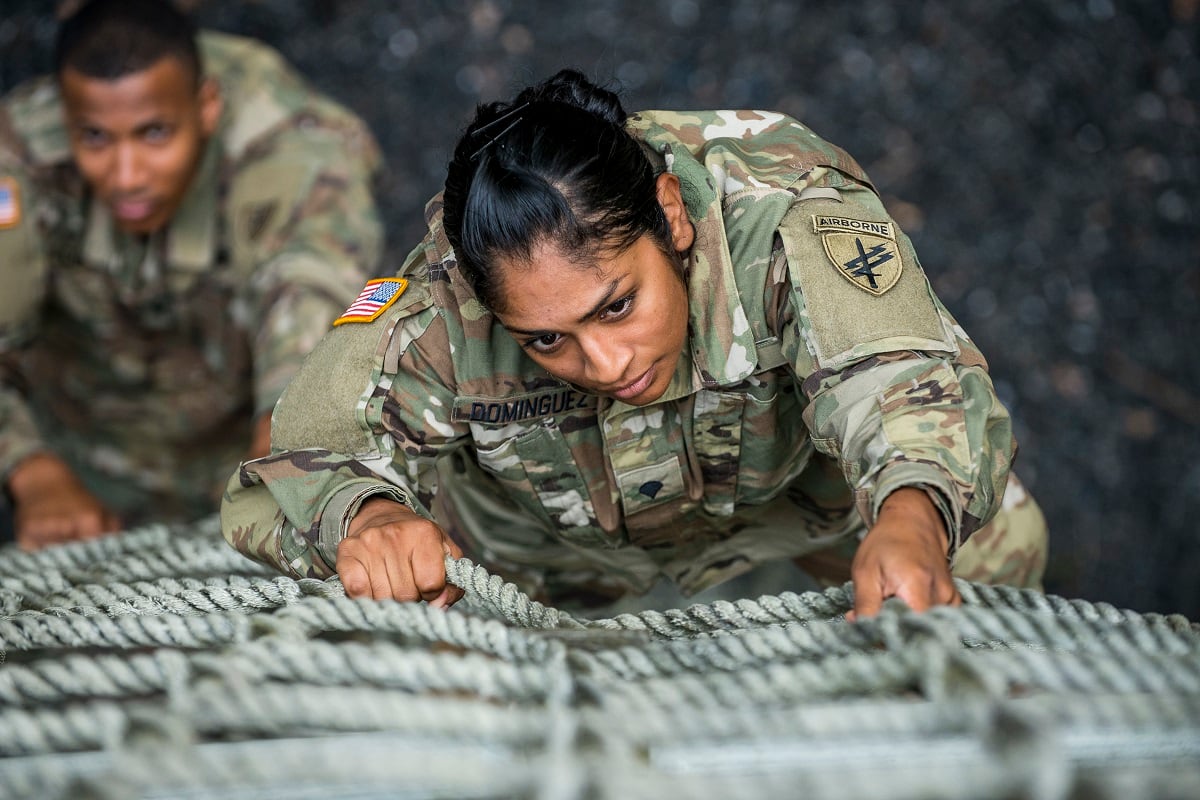For as long as there has been an Army Physical Fitness Test, experts both inside and outside of the Army have known that the three events therein did not really measure how a soldier would perform in the Army’s most essential environment: combat.
But it was easy to train for and easy to administer, so it endured, despite protestations that push-ups and sit-ups measure the same thing, muscular endurance, and not strength, agility or any other domain of fitness.
After decades of back and forth over how to improve not only how the Army tests soldier fitness, but how it fosters physical wellness and prevents costly injuries, the service is charging toward a new era of readiness with not one but two new tests.
And what else is different?
Their standards are gender-neutral, a defined trend for the service since the 2017 roll-out of the Occupational Physical Assessment Test, a bare-minimum entry requirement with military occupational specialty-specific standards based on the physical requirements of the job.
In fact, Army leaders have signaled that the days may be numbered for the old APFT, effectively rendering the Army’s physical fitness standards the same for men and women across the board.
“There are many discussions about the future of Army fitness testing and the associated policy to support desired outcomes,” Center for Initial Military Training spokeswoman Stephanie Slater told Army Times. “Of the many options is the replacement of the APFT with some form of an updated test.”
Those discussion do not, Slater added, include any adjustments to the three-event test to make it more efficient.

Such a shift would not only represent a revolution in the way the Army does physical fitness, but in the way it treats male and female soldiers.
Though the Army opened up its last closed, direct-combat positions to women in early 2016, it’s a common chorus in the service that because men have to run faster and do more push-ups on the APFT, women are getting a break when it comes to the standards.
But what if that wedge disappeared?
“You can’t use that excuse, because we’re all held to the same standard,” Maj. Nick Barringer, a former nutritionist for the 75th Ranger Regiment and member of the Ranger Athlete Warrior team. “You can’t say, you know, ‘So-and-so shoots better, but they don’t have to run as fast.’ You’ve taken that out of the equation now.”
And the discussion is going on in the highest levels of the service.
“I think what we’re going to see in the future is the standards are going to be for the job,” Vice Chief of Staff Gen. James McConville told Army Times on March 12, at the Army Women’s Foundation summit on Capitol Hill. “We haven’t made a final decision yet, we’re not ready to make news yet, but we’re taking a hard look at that.”
He would leave it up to Chief of Staff Gen. Mark Milley and Army Secretary Mark Esper, he added.
“I think universal standards are the way to go,” Barringer said. “If we’re making fitness standards now to be more combat-focused, the requirements are the requirements. It doesn’t matter what sex you are.”
Two tests, one goal
As exercise science has advanced, so has the Army’s understanding of the beloved push-up, and its controversial cousin, the sit-up.
Rather than efficient measures of core and upper body strength, two attributes absolutely valuable to combat readiness, the service now recognizes that they both measure muscular endurance.
That domain is necessary to measure overall fitness, as is the cardiovascular fitness measured by the run, but in its latest push, the Army has moved to address the other three.
The Army Combat Readiness Test includes a three-repetition dead lift with more weight each time, to measure muscular strength.
There’s also a standing power throw, a single toss with a 10-pound medicine ball, to measure power through the distance one can throw it.
The service began pilot tests on the assessment last fall, and pending senior Army leadership approval, Training and Doctrine Command would like to launch initial operating capability this summer, Slater said.
If all goes well, she said, after a policy update and review of the IOC’s testing results, soldiers could be taking the ACRT for the record next year.
The Soldier Readiness Test, which is being piloted by Forces Command, on the other hand, focuses on events that approximate tasks in combat.
They include sandbag stacking, an agility drill, and a run, featuring obstacles, in full gear.
Together, the two measure similar domains of fitness, but for different reasons.
The ACRT is being developed as a TRADOC test of record to measure overall soldier fitness, while the SRT would be administered by commanders to judge a unit’s readiness as a whole.
The SRT, the results of which are not tied to individual soldier records, is on an even faster track. Piloting finished in December.
“Based on feedback from the field, we are refining a few of the tasks within the test itself,” said Paul Boyce, a spokesman for FORSCOM. “It will be ready for implementation as early as this spring, if directed.”
FORSCOM is now taking steps to create a training program, called SRT2P, to prepare soldiers for success on the SRT, which will fall into TRADOC’s burgeoning holistic fitness program, Boyce said.
“It seems like, hey, the change is really going to happen,” Barringer said. “I think this is a step in the right direction of treating soldiers like tactical athletes.
“Saying, ‘Hey, we’re not just doing push-ups, sit-ups, etc. You can dead-lift, you can do all of these other more functional movements.’ ”

Continually evaluating each of the tests will be key to determining whether the Army is accurately measuring everything it wants to measure, one health and fitness expert told Army Times.
“I think what they’ve come up with can probably answer those questions,” said Brian Schilling, the chair of kinesiology and nutrition services at the University of Las Vegas, Nevada. “They can probably test the domains of fitness like they’ve talked about.”
But among OPAT, ACRT and SRT, the testing events are varied in what they’re measuring and how.
“I think those are good things. When I look at those tests and I see they have the dead lift test in there,” he said.
“They say they’re measuring power, but it’s upper-body power. If it’s a seated medicine ball throw, it’s upper-body power. If it’s a standing backward medicine ball throw, then it’s a full-body power exercise.”
The service should also ensure that the two readiness tests are not redundant, he added.
“I mean, that’s the last thing the Army wants, where you have two of these tests and you test 100,000 people, and it comes out that they’re highly correlated with one another,” he said. “Well, that means you could have not done one of them.”
One mile, no sweat. Two miles, better yet.
“I definitely think it’s headed in the right direction. I’m a huge fan of one standard, and it’s just because from my experience going downrange — there’s no separate standards in combat,” Barringer said. “If you have to evac a soldier in combat, they’re going to weigh what they’re going to weigh.”
One thing did puzzle him, however. That pesky, ever-enduring run.
The ACRT includes your standard two-mile run, while SRT requires a 1.5-mile run in helmet and body armor, with four over-under poles to negotiate halfway through.
“The only kind of negative I would point or, I’m a bit befuddled by, would be the two-mile run. Because nowhere have I seen — on multiple deployments — any soldier leave the wire unloaded,” he said. You’re always leaving with at least 40 pounds of kit. So why are we doing an aerobic assessment unloaded?”

While the Army may very well decide to completely do away with the APFT, Schilling cautioned that the new functional fitness tests, while a great improvement, might not be able to measure everything the service needs to know.
In moving away from APFT, the Army has held onto that distance run as a measure of basic cardiovascular health.
In short, while soldiers need to be tested on their combat readiness, their commanders also want to know that they’re not at general risk for a heart attack.
“As long as there’s some sort of run component in there, they’re going to be good for the cardiovascular part,” Schilling said.
The key will be to explain the reasoning behind each bit. As Barringer said, a branded combat readiness test with an unloaded run doesn’t really have anything to do with combat.
“I honestly think the two-mile run is destructive. And why do I think it’s destructive? If you look at it, it favors the lighter, smaller soldier in a lot of ways,” Barringer said.
“And it can kind of provide a false incentive for that. ‘OK, as long as I run faster and score higher.’ But then you put that same soldier under load, and it becomes a different story.”
The SRT accounts for that, but, of course, isn’t meant to be a test that affects promotions or has any consequences for the individual.
Barringer suggested replacing the run with a five-mile march in full kit.
“If we had a loaded movement, now, all of the sudden, that soldier who is 125 pounds might realize ‘Oh, that’s hard when I’m carrying 40 pounds. Maybe I need to gain muscle, maybe I need to train,’ ” he said.
And, he added, a standard medical stress test is done while walking a treadmill on an incline. If that can accurately measure heart health, why is the run necessary?
“As far as a heart attack, I’m not a physician, but the two-mile jog — I can’t imagine it’s going to be any more indicative than a five-mile walk under load,” he said. “I would suspect you’d see similar heart rates in a five-mile march under load as you would in a two-mile jog.”
One for all
Schilling, a former University of Memphis professor, helped develop an occupational fitness test for the Navy back in 2011 with a team at the service’s personnel command in Tennessee.
The work never went anywhere, though, as the Navy decided a test requiring that much space and equipment would be too much of a burden on commanders underway.
Because, unlike in the Army, sailors are out to sea for multiple weeks or months-long stints throughout the year, sometimes with little notice, and they have to be able to do their Physical Readiness Test on a ship.
In recent years, four of the services have made moves toward gender-neutral testing.
The Coast Guard, for its part, does not have a service-wide fitness test, but uses gender-neutral standards for the many rating-specific tests given at the unit level.
The Marine Corps, an innovator with its occupationally-based Combat Fitness Test, has still held on to gendered standards, despite opening every MOS to women in 2016.
Meanwhile, the Air Force debuted job-specific PT tests earlier this year, with one standard for all.
Biologically, Schilling said, the science says that men and women’s bodies are different — healthy height-weight ratios are different for each of the sexes, as are measures of strength and endurance.
A healthy man should be able to run faster and do more push-ups than an equally healthy woman.
“If it’s for a health question, yes,” Schilling said of the need for separate standards. “If it’s for performance, no, because performance is absolute.”
Still, he added, a combination test with demand-based functional tests and a gender-standard run could cover all of the bases.
Culturally, however, one overall standard would represent a major shift in negative attitudes toward women serving in combat.
“Because as long as you have separate standards based off of sex, you’re always going to have that,” Barringer said.
Meghann Myers is the Pentagon bureau chief at Military Times. She covers operations, policy, personnel, leadership and other issues affecting service members.





